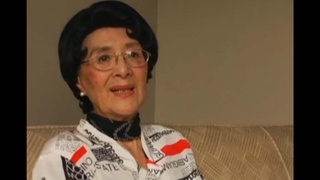Entrevistas
Disseminating the excellence of Japan to the world through the Amano Museum (Japanese)
(Japanese) The Amano Museum is already nearing its 40th year of service. Why did Amano, a Japanese, start the Amano Museum, a private museum, and why has the museum yet to collect even a single cent in admission fees? It operates without charging anything.
Why Amano wanted to do that kind of thing was, of course, at its foundation. Primarily, Mr. Amano enjoyed studying the Andean culture. Plus, none of the other Japanese did that kind of thing in any other country. Amano researched the Andean culture for the world. By putting it all together in a museum, for the people who come to the museum, he could show people the magnificence of the Chancay culture in order to amaze them. And, as they are impressed by this magnificent research, the person who put together, this collection, is none other than a native Japanese. The administrative staff is all Nikkei. They’re all Nikkei individuals. And when the guest meets these Nikkei, they realize for the first time that Japanese people can pour this kind of dedication and love into another person’s culture. They learn that we are a people who can indulge in this kind of deep understanding and dedication. This is, in fact, one of the ways of promoting Japan’s public image. Getting a message out about Japan isn’t just about showcasing Japanese historical cultural artifacts in foreign countries, but about informing people in foreign countries about the particular qualities that Japanese people have. It’s a very good system that Amano had in mind—well, at least it turned out to be —that continues on to this day.
And so, we are staying true to that spirit by continuing to operate in the same way. It’s one of the ways we introduce people to all that is Japan - that the Japanese people in a foreign culture can still have this much enthusiasm demonstrates that Peru is deeply bonded in friendship with Japan. Also, other countries can always keep in mind that there’s this museum in Peru, that this is the greatest Chancay collection in the world, and because of its world-wide reputation, then, of course, the qualities of Japanese culture and Japanese people are also spread throughout the world. And there you go. It’s a positive public image; it’s exemplary of the Japanese. So that means, every single day, in order to achieve that, we have to put forth our best efforts.
Fecha: May 7, 2007
Zona: California, US
Entrevista: Yoko Nishimura
País: Watase Media Arts Center, Japanese American National Museum

